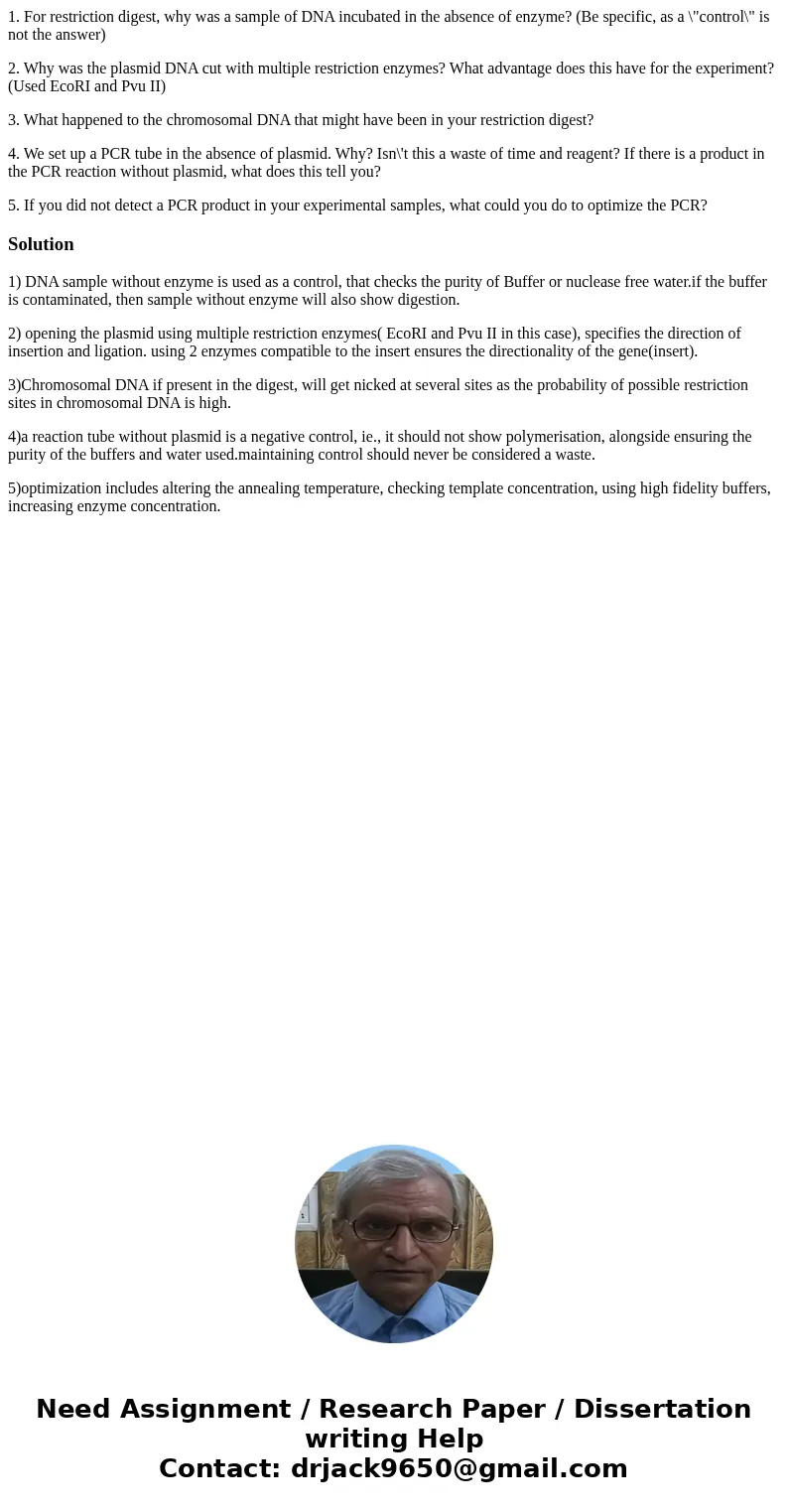1 For restriction digest why was a sample of DNA incubated i
1. For restriction digest, why was a sample of DNA incubated in the absence of enzyme? (Be specific, as a \"control\" is not the answer)
2. Why was the plasmid DNA cut with multiple restriction enzymes? What advantage does this have for the experiment? (Used EcoRI and Pvu II)
3. What happened to the chromosomal DNA that might have been in your restriction digest?
4. We set up a PCR tube in the absence of plasmid. Why? Isn\'t this a waste of time and reagent? If there is a product in the PCR reaction without plasmid, what does this tell you?
5. If you did not detect a PCR product in your experimental samples, what could you do to optimize the PCR?
Solution
1) DNA sample without enzyme is used as a control, that checks the purity of Buffer or nuclease free water.if the buffer is contaminated, then sample without enzyme will also show digestion.
2) opening the plasmid using multiple restriction enzymes( EcoRI and Pvu II in this case), specifies the direction of insertion and ligation. using 2 enzymes compatible to the insert ensures the directionality of the gene(insert).
3)Chromosomal DNA if present in the digest, will get nicked at several sites as the probability of possible restriction sites in chromosomal DNA is high.
4)a reaction tube without plasmid is a negative control, ie., it should not show polymerisation, alongside ensuring the purity of the buffers and water used.maintaining control should never be considered a waste.
5)optimization includes altering the annealing temperature, checking template concentration, using high fidelity buffers, increasing enzyme concentration.

 Homework Sourse
Homework Sourse